It was a long time before I made the move to adopt CD format releases, perhaps equal parts refusenik and pauper behind the decision. But eventually the changing tide meant much was being missed because of the lack of a CD player and so it was time to get out there for one and start to buy the shiny silver discs. Obviously, the main push point on this were those albums with a big difference between what you got on vinyl and what you got on CD… Wire’s 1990 ‘Manscape’ album was the driving force for me personally, but one of the earliest examples of this variance in formats in my area of interest was Killing Joke’s 1986 album, ‘Brighter Than A Thousand Suns’.
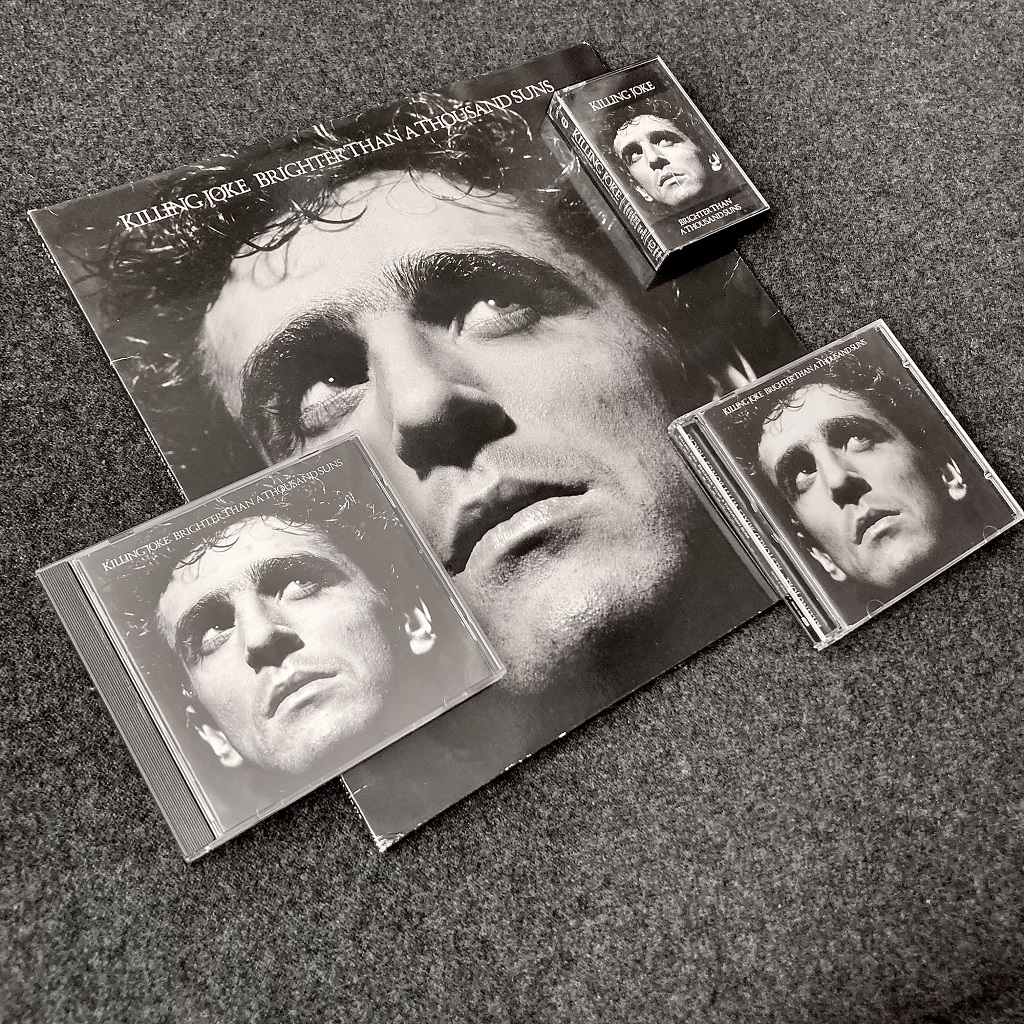
Now, I don’t think I’m being unfair in saying that it was viewed with suspicion at the time. Cries of ‘sell out’ or sounding like Duran Duran (absolutely preposterous, of course) were heard in sometimes hysterical reviews. But it’s obvious that the changing sound was in some way related to pressure from the record label to repeat the success of the previous year’s top 20 success of ‘Love Like Blood’ – how else do you explain the varied cast of ill-fitting producers and recording sessions that make up the eventual album? Despite this, neither of the album’s singles would do any spectacular business on the singles charts, despite a spread of formats for both ‘Adorations’ and Sanity’ single releases – and certainly not hitting the heights of the previous year’s ‘Love Like Blood’. That single itself had already been viewed with narrowed eyes at the time in some quarters with suspicions of a sell out, so ‘Adorations’ with its polished sound and glossy sleeves with posed band photo shots would ring alarm bells even louder.
Its parent album, ‘Brighter Than A Thousand Suns’ was the band’s sixth studio album, a good long way into their career by now and the sound was transformed from those early albums. ‘Brighter Than A Thousand Suns’ has a polished, machine-finished dark sheen to the sound by comparison to those early albums. It’s a different beast, but is hardly the commercial sell out it was too often seen as being. One of the main accusations is the foregrounding of synths and keyboards to the detriment of Geordie’s guitar. That is a fair point – on some tracks, such as ‘Sanity’, you’re a minute in before the guitar makes its presence felt. The album sleeve credits Jaz for the keyboards on the album – and these were much more to the fore throughout the album, no doubt about it. Dave Kovacevic is thanked in the credits on the album – and subsequently has mentioned while interviewed* as contributing the majority of keyboards during the album’s recording. It’s the keyboards then where the sound is much different from those early albums – many an act who had fought dial by dial, patch to patch in the analogue trenches in earlier years only to fall to the lure of mid-’80s digital synths and their easy, press-button presets – warm pads, icy washes and glacial pianos? It would become tempting, but all too often blander. The intro to ‘Sanity’ a prime example of the hazards of the period, it’s antiseptically clean and precise.
To my ears, it’s in the drum department where there are differences too – as was common with many a release of this era, that big, clean, boxy sounding, sequenced to the grid sound was all too evident on the original release with Julian Mendelsohn’s mixes too. I wasn’t following the intricacies closely enough at the time, but it’s clear in retrospect that the recording and production of this album was far from quick and straightforward and tells its own tales of ’80s excess and likely record company pressure.
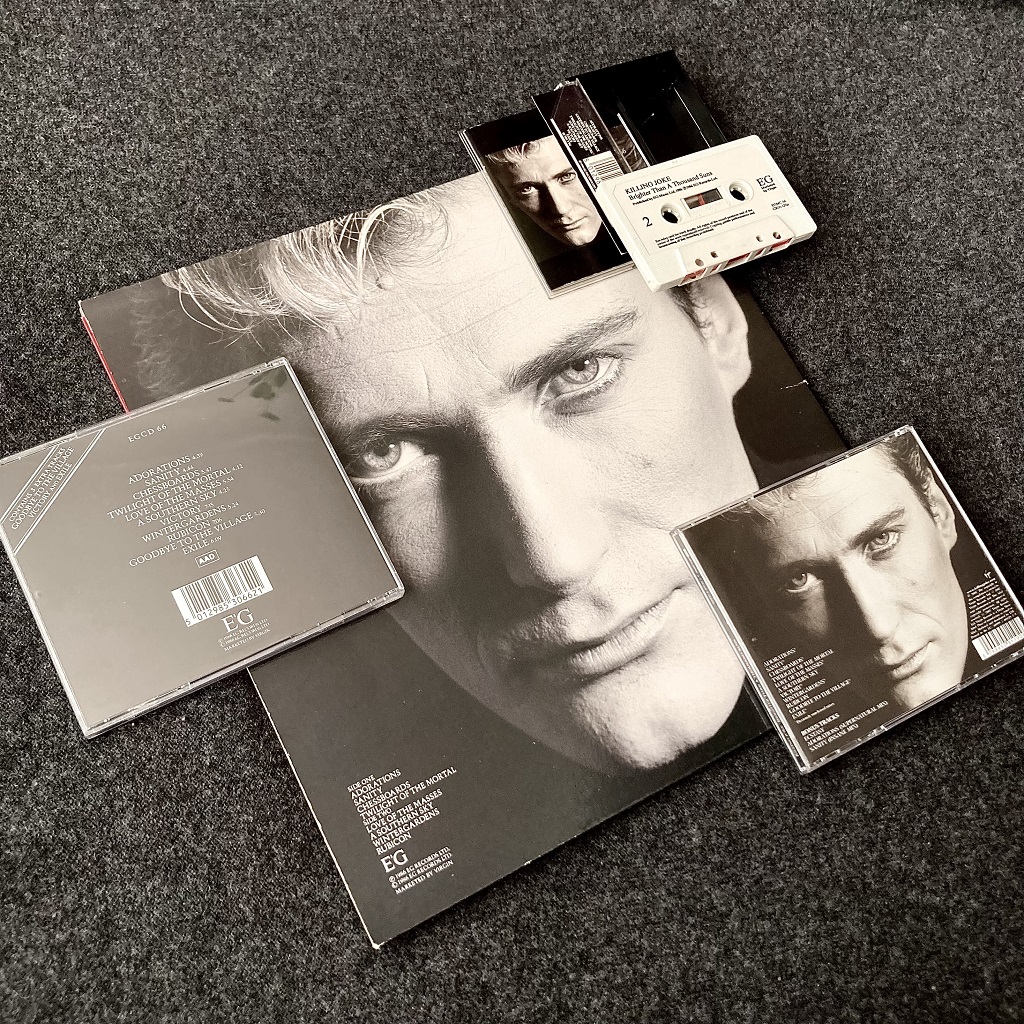
In a nutshell, the album varies depending on which format you have of either the original release or if you have the later ‘restored mixes’ version from 2007 onwards – and it is made up from at least three separate recording sessions (October 1985, March-April 1986 and August 1986) and multiple additional mix/remix sessions.
The bulk of the album was recorded in Berlin in late 1985, recorded and mixed with producer Chris Kimsey at the helm. ‘Victory’ and ‘Ecstasy’ were recorded with a new producer, Steve Levine, in March-April 1986 – both tracks produced in shorter single-length versions and extended length remixes – an intended single release perhaps? Another recording session and yet another production team came in August 1986 for ‘A Southern Sky’. Then the original album mixes that Chris Kimsey had completed were ditched and a new set commissioned from Julian Mendelsohn instead.
What was going on?
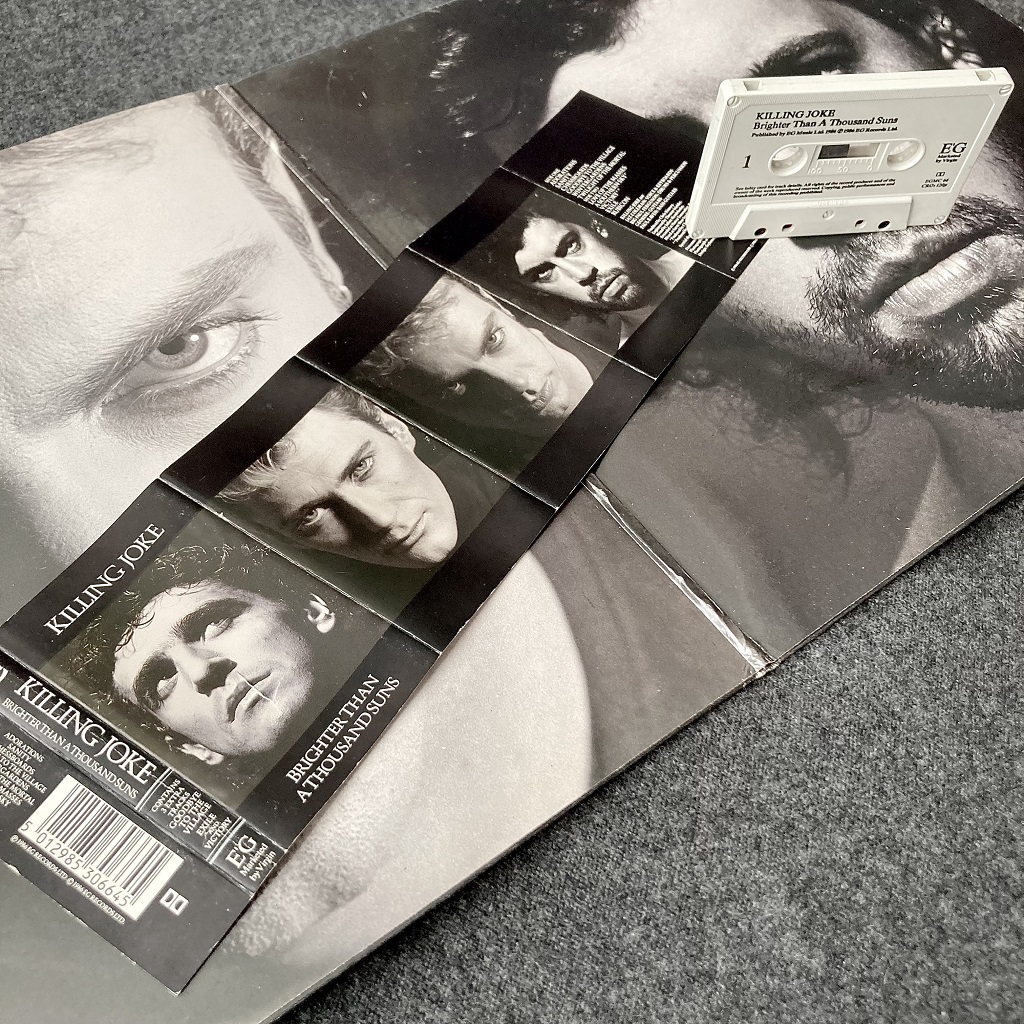
There are at least six names to be aware of in the production/mixing duties for the final album release in 1986 – Chris Kimsey, Julian Mendelsohn, Stewart Levine, Chris Tsangarides, Bob Kraushaar and Zeus B Held. Quite why some of these came into Killing Joke’s orbit is a head-scratcher – other than the obvious; these were in-demand, commercially successful producers of the day – but for acts far removed from the sonic world that Killing Joke strode upon. Either band or record label hoped perhaps that they might bring their alchemy to bear on the band’s new work.
While Chris Kimsey already had form with the band, having produced the previous album ‘Night Time’, Julian Mendelsohn’s successes included Nik Kershaw, Pet Shop Boys, Level 42, et al. Stewart Levine’s included The Crusaders, Womack and Womack and Simply Red. Chris Tsangaride’s name was synonymous with a good many hard rock and metal acts, while at the time Bob Kraushaar was most associated with ZTT acts Propaganda and Art Of Noise.
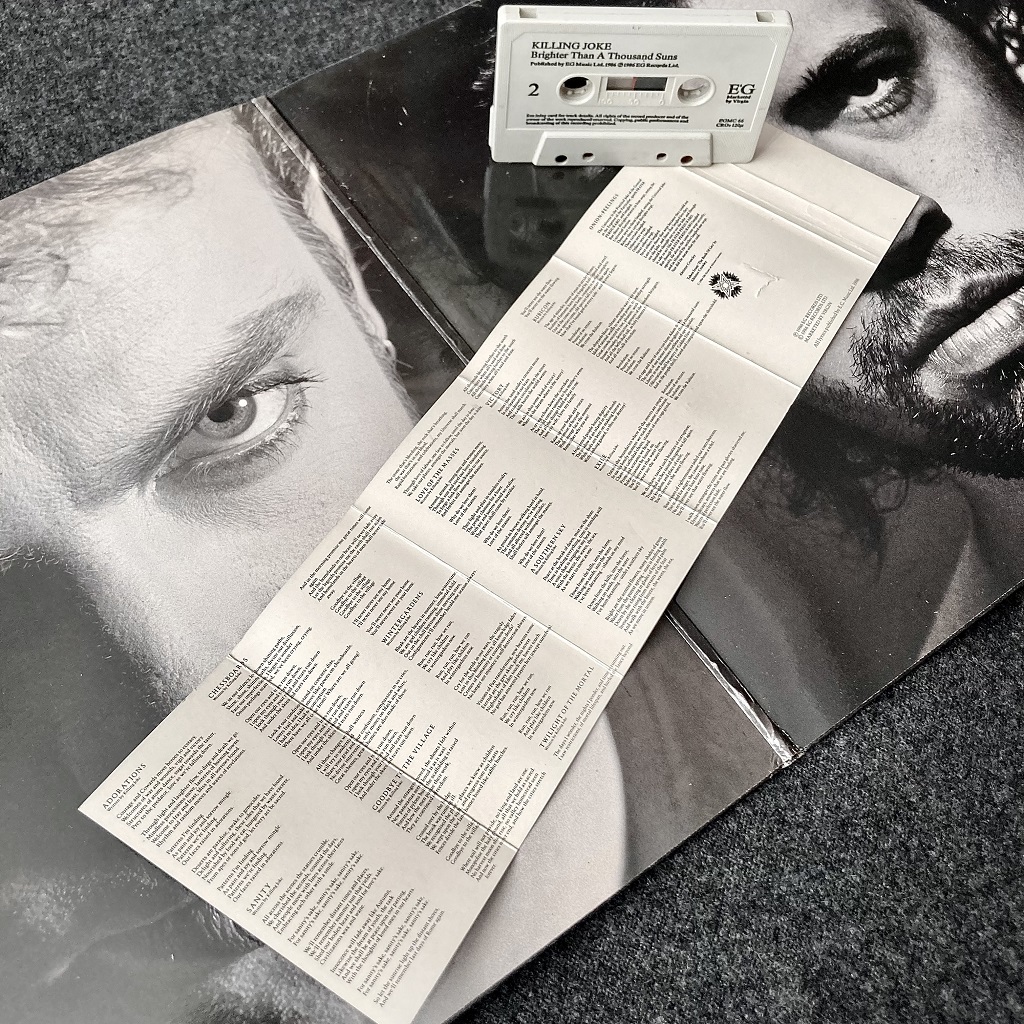
At the time of the original release in 1986…
- The vinyl album contained eight tracks, seven of which were recorded at Hansa Tonstudios in Berlin during October 1985 and produced by Chris Kimsey and mixed by Julian Mendelsohn at Sarm West Studios In London.
- The other track from the vinyl album (‘A Southern Sky’) was recorded and produced by a different team – produced by Chris Tsangarides and mixed by Bob Kraushaar and recorded at London’s Battery Studios in August 1986.
- Of note, the tracks recorded in Berlin and produced by Chris Kimsey were not the original set of final mixes when first released. The original mixes were produced and mixed by Chris Kimsey alone – however, it appears that pressure from E’G Records led to a second set of mixes being made by the then in demand Julian Mendelsohn, presumably aiming for a more commercial sound.
- The CD and cassette editions contained three extra tracks – two of them were from the main October 1985 album recording sessions in Berlin and produced by Chris Kimsey and mixed by Julian Mendelsohn – these two tracks (‘Exile’ and ‘Goodbye To The Village’) would be used as the B sides for the two singles released from the album. The other extra track in question (‘Victory’) had yet another production team – produced (and presumably mixed) by Stewart Levine and recorded at RAK Studios in London during March and April of 1986. The mix included on this CD was the long, 7′ 11″ duration mix. A shorter ‘Single Version’ would be released many years later (firstly on the ‘Killing Joke For Beginners’ compilation CD) – interesting, given that it never was issued on a single.
So much for the original then. In 2007, the album was re-issued and on this occasion most of the mixes used were the original versions as produced and mixed by Chris Kimsey instead of the Julian Mendelsohn mixes. The exceptions were ‘A Southern Sky’ and ‘Twilight Of The Mortal’. Two of the Chris Kimsey mixes had been released before this – ‘Wintergardens’ (in a slightly shorter duration) on 1992’s ‘Laugh? I Nearly Bought One’ compilation and ‘Rubicon’ on the ‘Killing Joke For Beginners’ compilation. The ‘restored mixes’ 2007 CD edition of ‘Brighter Than A Thousand Suns’ also added three further extra tracks – two of these being 12″ remixes from the two singles released from the album and the third being ‘Ecstacy’, which was one of the tracks included on some editions of the ‘Adorations’ single. The version of ‘Ecstasy’ on this 2007 CD is the shorter mix from side 3 of the double pack 7″ of the ‘Adorations’ single. (The longer mix, which originally appeared on side B of the first of the ‘Adorations’ 12″ releases can also be found on the 2008 ‘RMXD’ compilation.) ‘Ecstasy’ dates from the same sessions that also produced ‘Victory’, so it was produced (and presumably mixed) by Stewart Levine and recorded at RAK Studios in London during March and April of 1986.
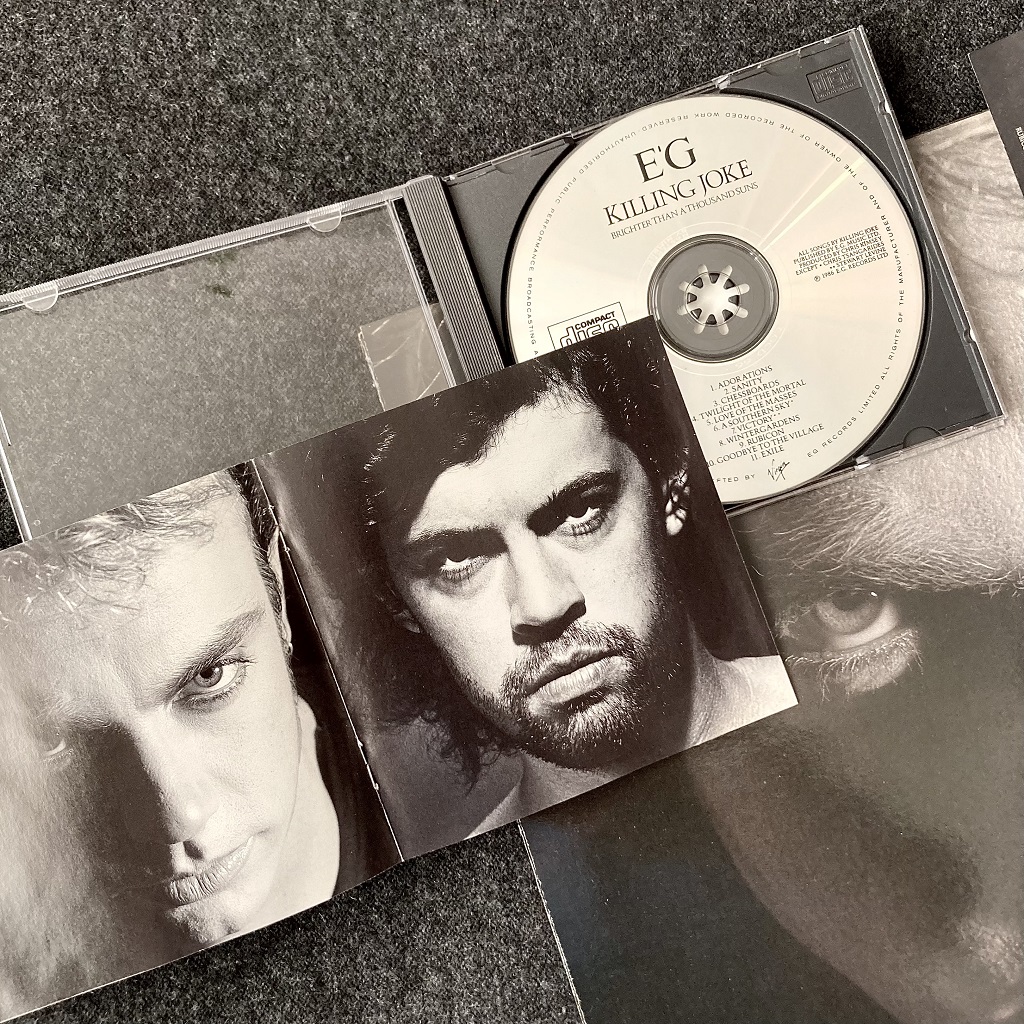
So, how much difference is there between these ‘restored’ original mixes and the Julian Mendelsohn mixes from 1986? I’ve read reviews that wax lyrical about wiping away the layers of keyboards and rescuing the guitars from the background. Well, I don’t hear that really – the mixes are not that different in their arrangements – the lack of guitar and synth-heavy atmospheres are already baked-in, largely – though the mix balance certainly helps matters. There are differences, for sure – check out the intros to ‘Adorations’, for example. Where there is a big difference, to my ears at least, is in the drums – there’s definitely a more human touch, less of the heavy duty ’80s excess as discussed above. And also with the vocals – on the original mixes, Jaz’s vocals right up front, loud and clear by comparison to the Chris Kimsey mixes – take a listen to both versions of ‘Adorations’ as an example, you’ll see what I mean. ‘Adorations’ is one track where it especially noticeable – perhaps because it was chosen as the lead single and needed a more ‘radio friendly’ mix with vocals nice and clear?
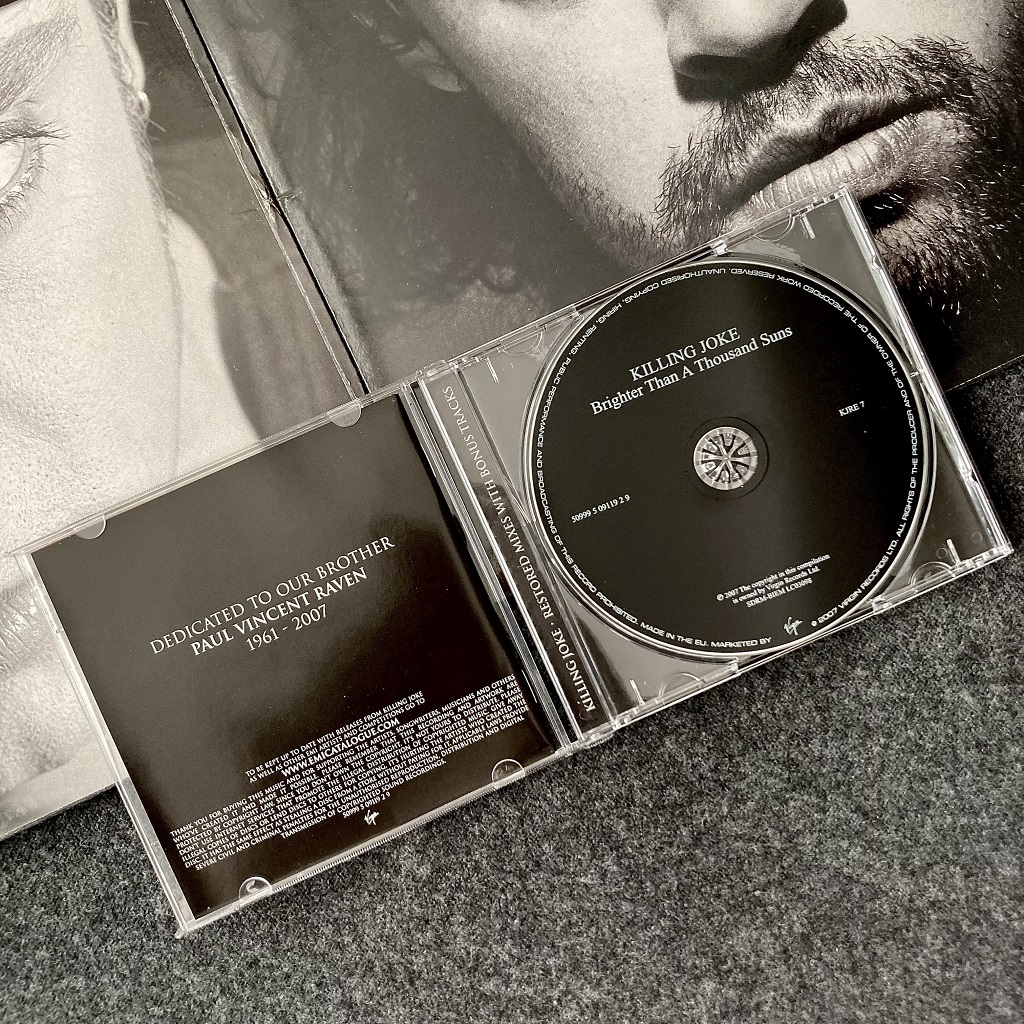
Listen for yourself though and be the judge, but there is no dramatic transformation between the versions. I’m left wondering why there was need for a complete remix by Julian Mendelsohn when the before and after is hardly much changed. No wonder the band ended up with so much debt owed to the record label.
But what of Zeus B Held? We’ve not touched upon him yet. Well, the mid-’80s record industry promotion machine included multiple 12″ editions amongst its armoury, most often with a second 12″ remix coming along a week or two later to keep sales hot and boost chart positions. Looks like this is where Zeus B Held’s part in the picture emerges here. Known primarily for production for acts such as Gina X Performance, Fashion and John Foxx, Zeus B Held was responsible primarily for most of the remixes across various formats of the album’s singles. These were the ‘Supernatural Mix’ for the second 12″ of ‘Adorations’ and both of the 12″ ‘Sanity’ remixes (the ‘Roman Mix’ and the ‘Insane Mix’). But those were not all – he also mixed ‘Adorations’ (Instrumental Mix) featured on the double pack 7″ single and ‘Sanity’ (Instrumental Mix) on the B side of the first 12″ edition and cassette single. Then, on top of the album related songs, he also produced additional remixes of back catalogue tracks – ‘Love Like Blood’ (The ’86 Mix) for the second ‘Adorations’ 12″ B side, ‘Wardance’ (The RAF Mix) for the second ‘Sanity’ 12″ single and finally ‘Wardance’ (The Naval Mix) a mix exclusive to the ‘Sanity’ cassette single. (Thanks Mike for the scans on this rare item!)
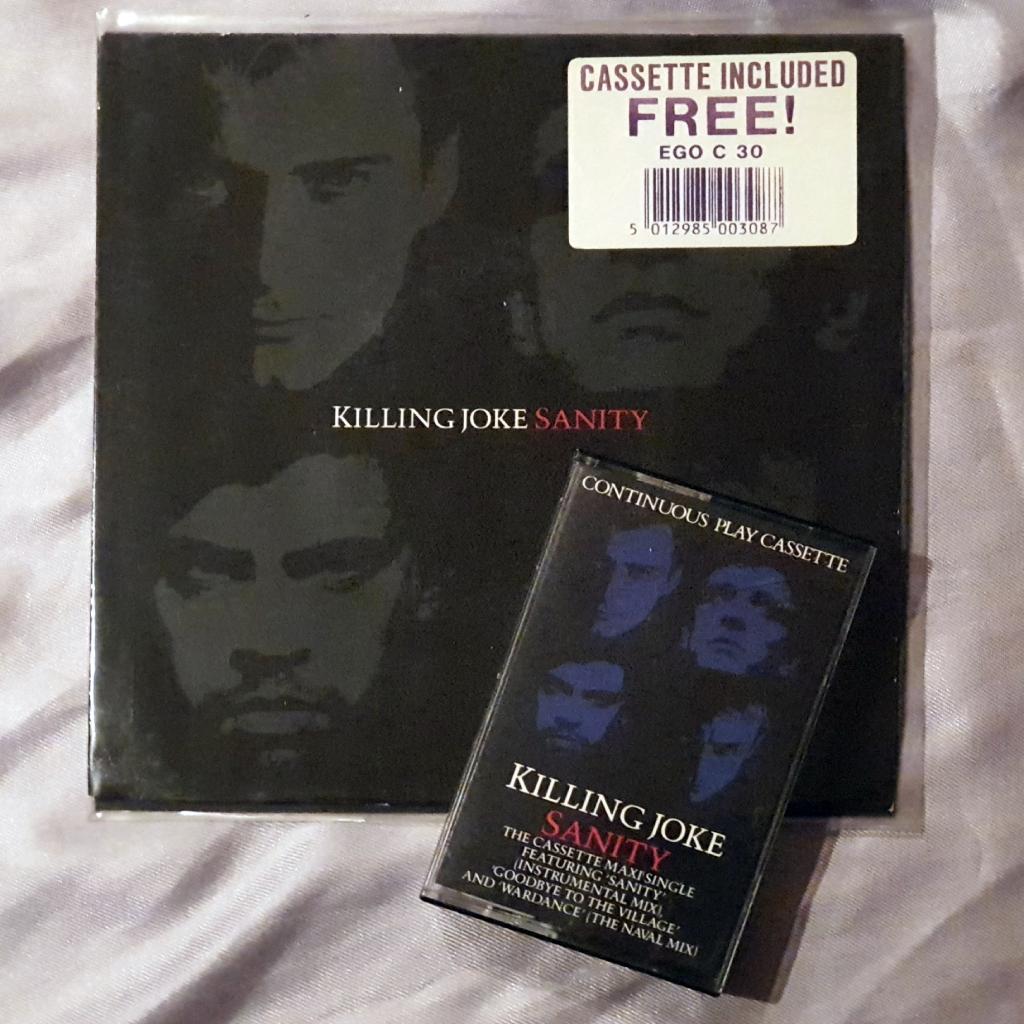
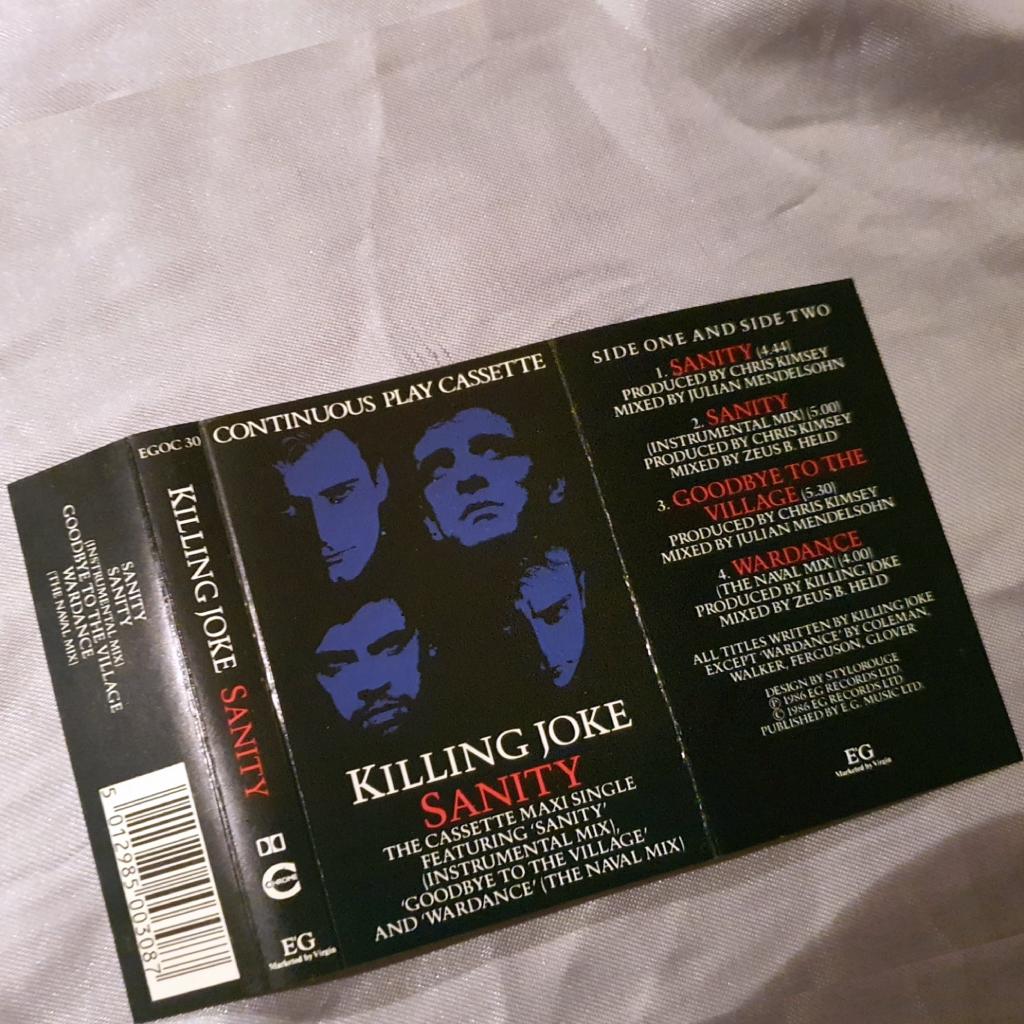
Phew… I would love to know more about the back story and the decisions made along the way, especially the tracks recorded in 1986 after the main Berlin recording session in October 1985.
If you want to track down the original mixes as first released then original copies of ‘Brighter Than A Thousand Suns’ shouldn’t be too hard to find on CD. Much of the single remixes have appeared either on ‘RMXD’ or as bonus tracks on the 2007 restored mixes CD. The exceptions are the following mixes, which have never been released on CD as far as I know;
- ‘Adorations’ (The Extended Mix) (the first 12″ A side mix, 5′ 102 – produced by Chris Kimsey and mixed by Julian Mendelsohn – surprisingly absent from any compilations).
- ‘Sanity’ (Instrumental Mix).
…and for completeness, there is also a 4 33” edit of ‘Sanity’ from the US 12″ single B side out there. The most difficult to track down of the various remixes is the ‘Wardance’ (The Naval Mix), which, other than the original cassette release, only reappears later on the impossibly expensive and rare 33 CD boxed set edition of 2013’s ‘The Singles Collection 1979-2012’ compilation.
Finally, it is worth noting that the ‘Adorations’ 7″ A side mix is not the stated duration of 4′ 09” as printed on the sleeves. It is the same duration as the mix on the original 1986 album. The mix itself seems the same other than perhaps some extra compression on it. Helps to explain why 2013’s ‘The Singles Collection 1979-2012’ compilation has the version with the duration it does.
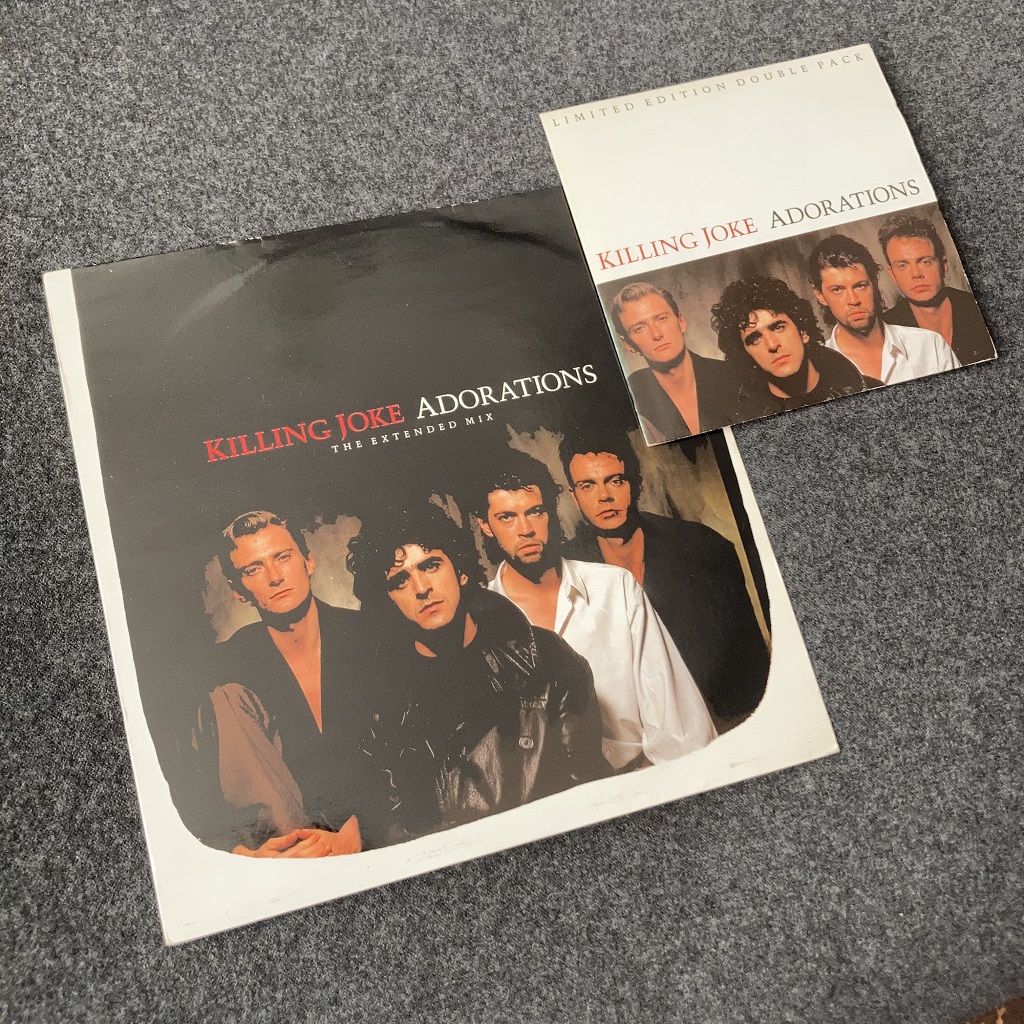
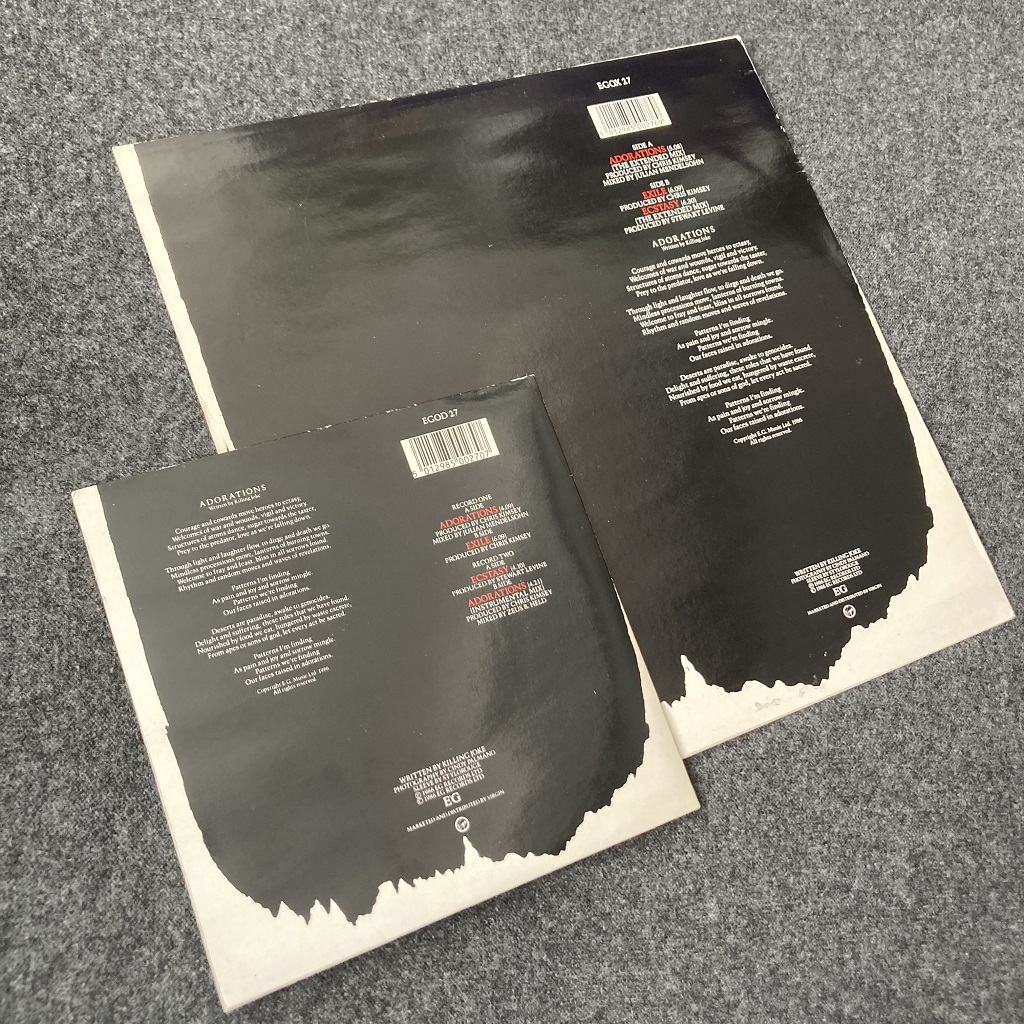
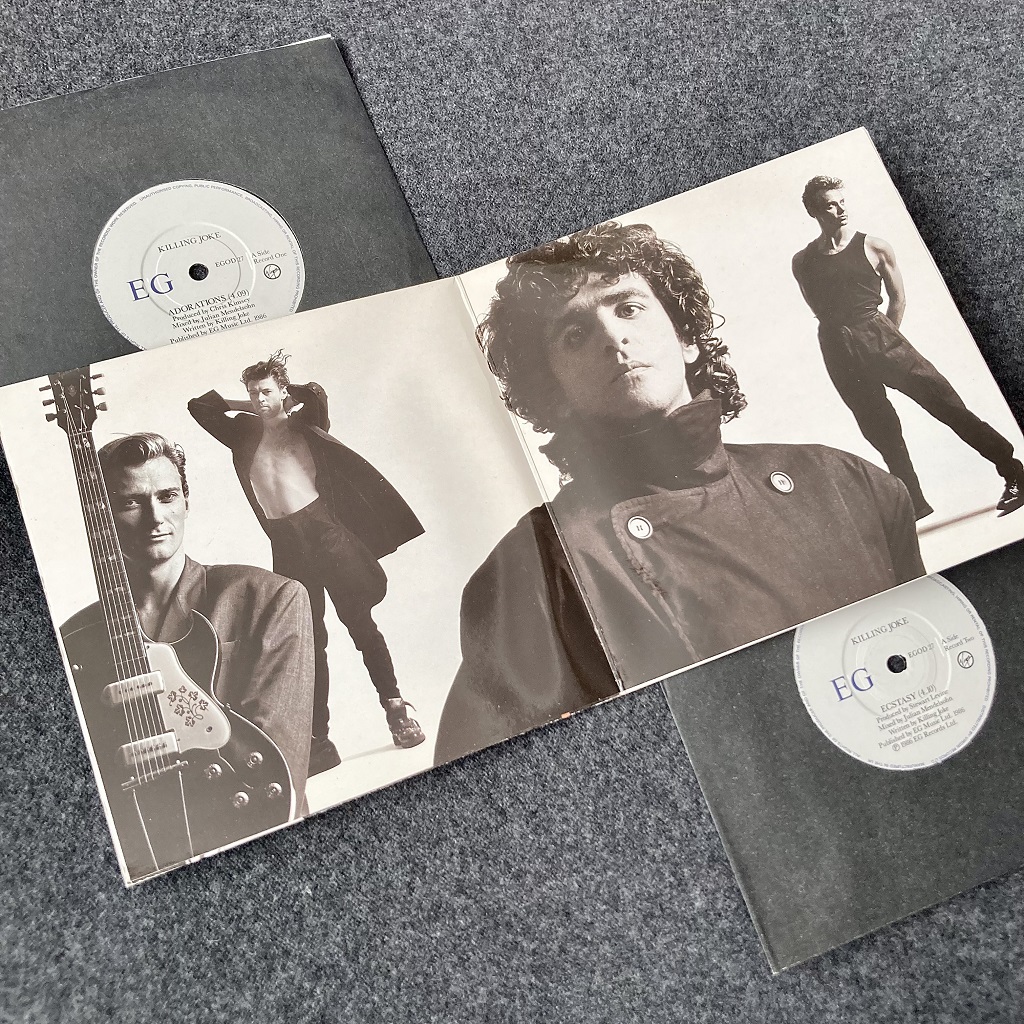
* Interviewed in ‘Killing Joke: Are You Receiving?’ by Jyrki ‘Spider’ Hamakainen, published 2020 by New Haven Publishing Ltd
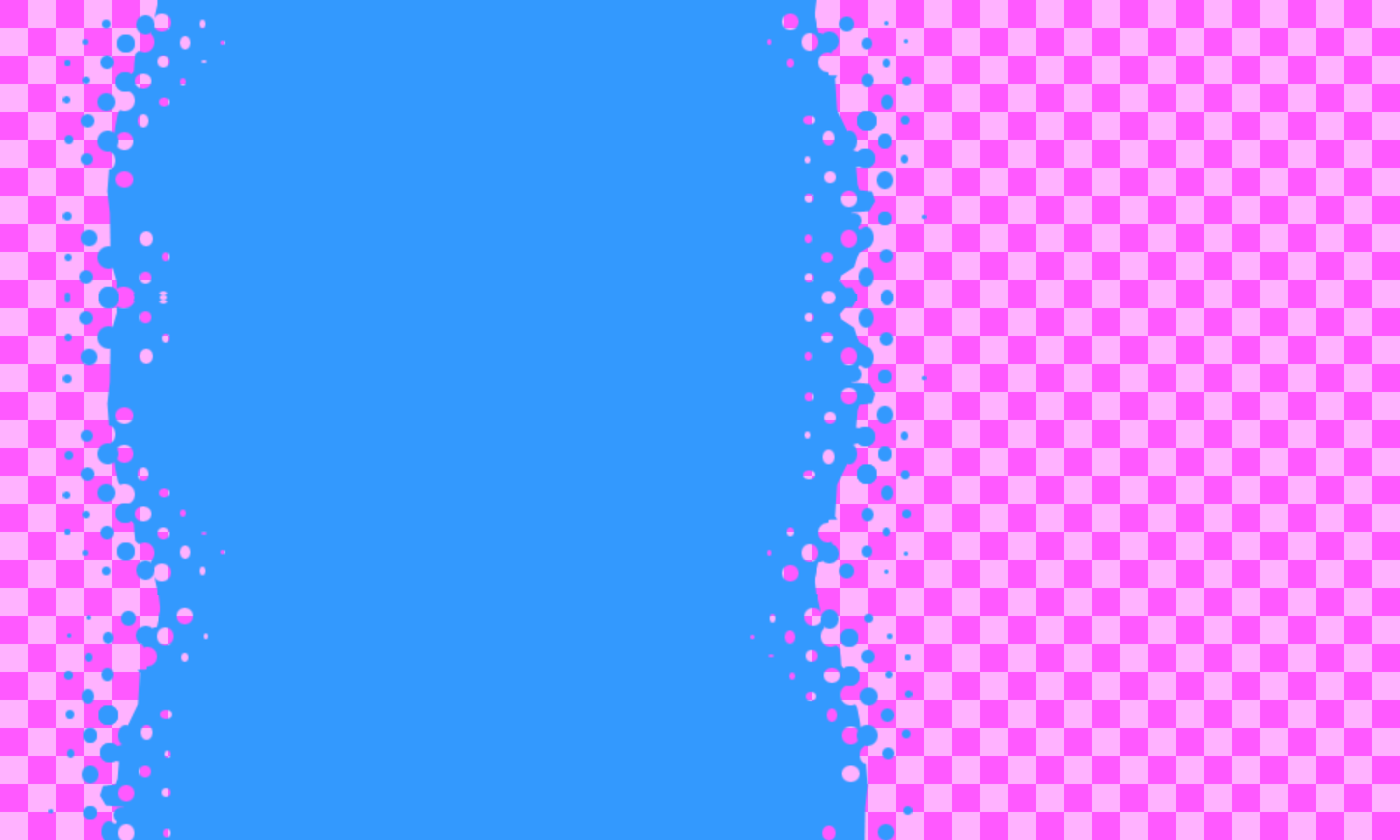

Great article, thanks. Have you considered researching the mysterious UK release of Sanity 12″ with a red cover? This is very scarce and possibly quickly withdrawn because either the cover listed the wrong tracks / versions, or was a mispressing, and therefore binned?
Thanks for commenting, Dave – I’ve never come across that particular 12” and it looks to be quite rarity – would be good to find out more of the particular background in quite why it is so rare – it has piqued my interest now…
Thank you for clearing all this up!
Hi,
Thank you for this article, there’s some really good info here much appreciated. I’m suprised there’s not a mention of Chessboards though, which on the original album has a slightly different (longer) arrangement than anything I’ve been able to find either on Spotify or YouTube today. I’m actually pretty gutted about it as its always been on YouTube in the past, not there any more, and it’s impossible trying to play my vinyl in the car or can’t even share the track . It’s my favourite Killing Joke track and at the moment not able to listen to its edited version as I find edited versions ( for radio etc) really annoying.Gutted. Can you recommend any good counsellor’s cos I’m struggling with this With? With thanks & kind regards. Matt ????